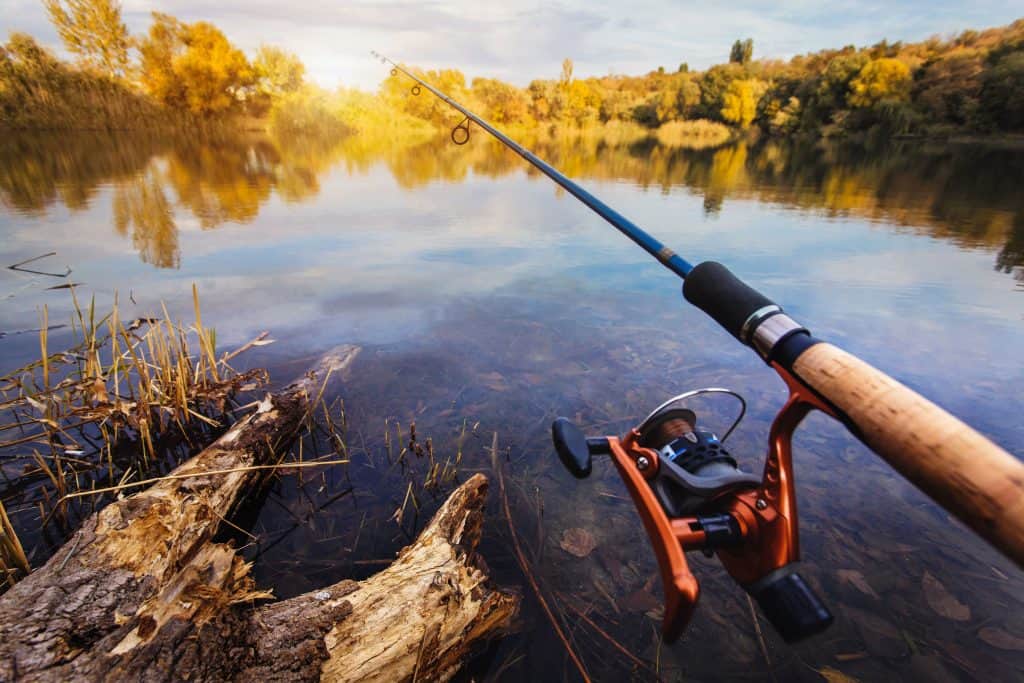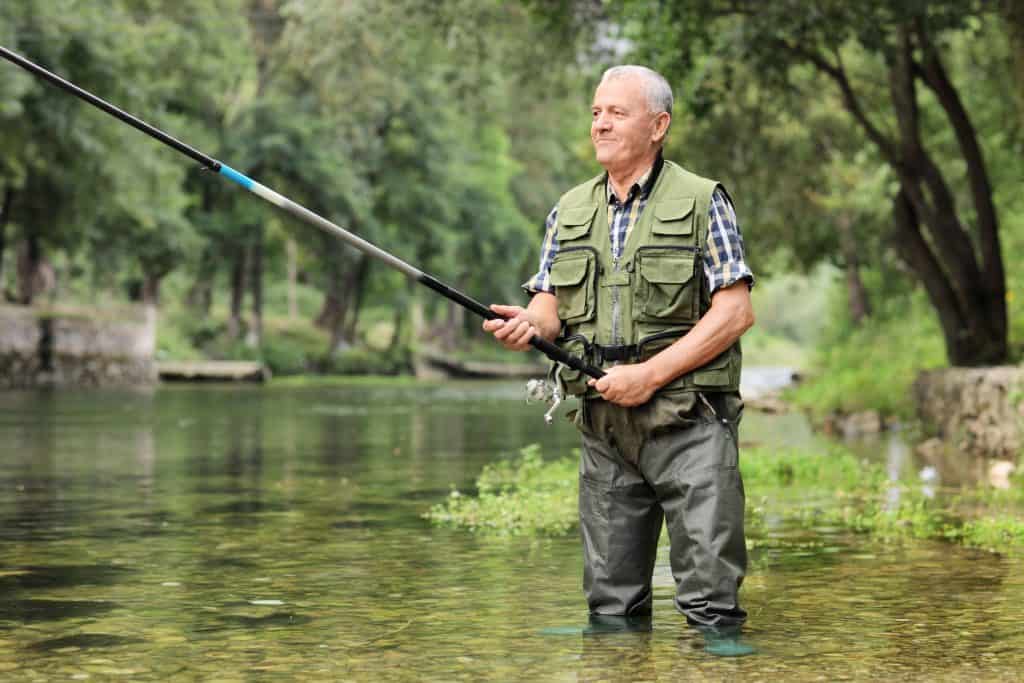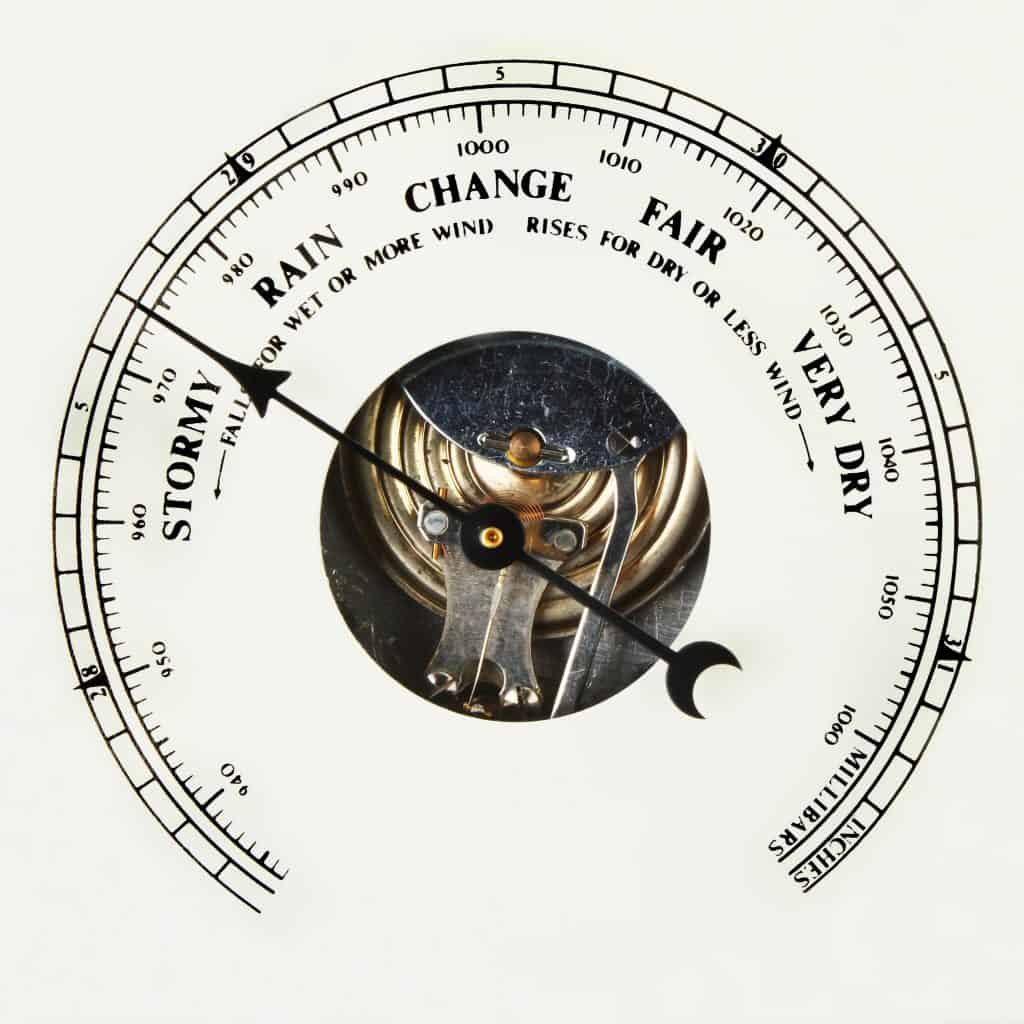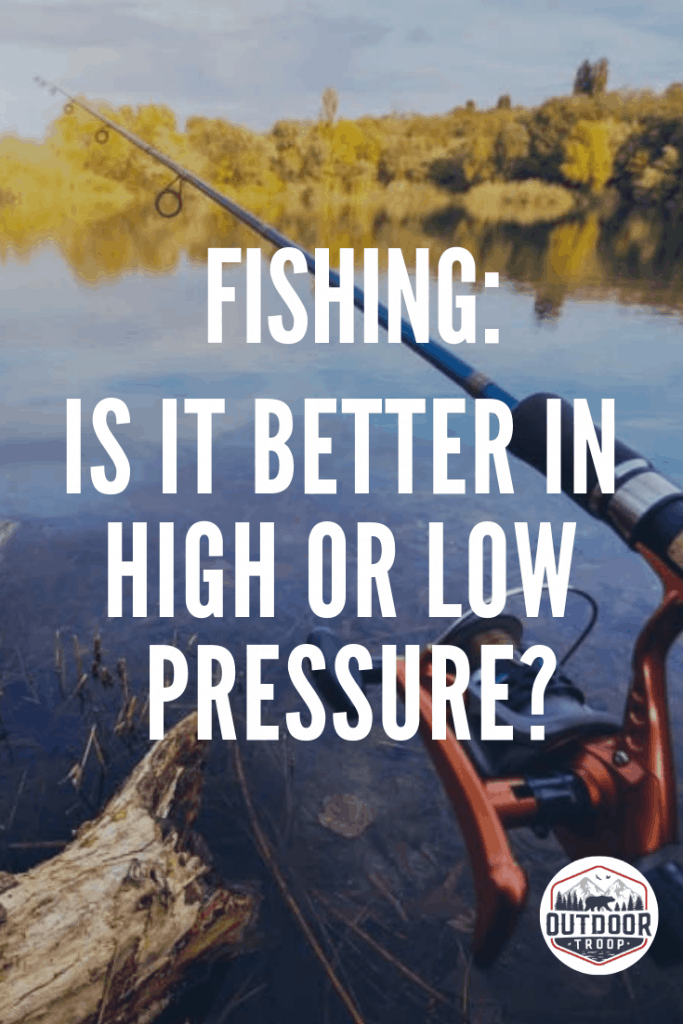
Recently, I have been getting more into fishing and wanted to know the best time to go. I first wondered if fishing would be better in times of high or low pressure. So I did some research and wanted to share what I found with you.
So, is fishing better in high or low pressure? The differences in air pressure allow for changes in fishing conditions. Fishermen will claim that a sudden shift to low pressure offers better fishing conditions than those of high pressure. However, each range of air pressure offers specific advantages that another does not.
Fish are equipped to both understand and handle the constant changes in air pressure. Since being underwater makes things feel lighter, when the air pressure changes the whole ecosystem can be shifted. Some things float to the top, while others sink to the bottom.
Read on to learn more about these constant changes, how the fish react to the changes, and how you can better your fishing trip.
How Fish React to Changes in Air Pressure
Every day, there can be anywhere upwards of 10 pounds of air weighing down on each of us. We are so used to this constant pressure that we don’t often notice when the pressure changes; however, fish are designed with the necessary sensors to both read and react to the changes in air pressure.
Feeling the air pressure underwater for fish is a lot different than how we feel the pressure on land. In fact, fish feel the effects of the changing barometric pressure before the change has even occurred.
Since the air pressure is constantly changing, fish are constantly seeking to find a balance in the water where the pressure is neither too great nor too little.
As the pressure changes, the air bladder of a fish either expands or feels a greater weight upon it. The expansion of a fish’s air bladder causes them discomfort and they forget about eating and focus more on stabilizing the pressure on their bladder.
Air pressure can change your odds of catching that big fish.
This causes the fish to seek either shallower or deeper waters. Thus changing your odds of catching a big fish.
Smaller fish, with a smaller air bladder may not feel the effects of air pressure as much as those with bigger air bladders. Therefore, when the barometric pressure isn’t right, you are more likely to catch only smaller fish.
Along with avoiding too great pressure, fish are also searching for that perfect “blend” of water. This blend has their ideal water temperature, the best oxygen levels, and the desired amount of light penetration.
First, let’s learn what the difference between high and low barometric pressure truly means.
As I mentioned above, the weight of the air above us is constantly pushing down on us. We measure this “weight” through barometric pressure.
When there is a high barometric pressure, we often refer to it as being “fair weather.” This pressure makes us act a little “sluggish,” simply because there is more weight from the air above on us.
On the opposite side, low barometric pressure is often related to “gloomy” or rainy weather. This occurs when the air is cooling and rising upwards rather than sinking downwards.
While this “lighter” atmosphere would seem to be more desirable, most of us, simply just don’t like the cold that accompanies it.
Fish react to the barometric pressure changes a little differently than us and sudden changes in pressure may alter the fishes’ normal reactions.
When low pressure occurs, fish bites may become more scarce due to the colder waters. Fish in these areas may either stop biting in order to stay in their “perfect blend” of water.
If fish can not find the desired blend of water, they may even vacate the area to find a better mix elsewhere. This may be the reason your perfect fishing hole is full one day and empty the next.
The best fishing is when the barometric pressure has been consistent for a few days.
Remember that larger fish have larger air bladders, and are seeking to find balance. So when there is a higher air pressure, these larger fish will be more comfortable closer to the surface, thus increasing your chances of catching that large fish.
However, in my research I found that the best time for fishing (since that is what we are all seeking to find) is when the barometric pressure has been consistent (more toward the high side) for a few days.
On the contrary, if a high-pressure system has lasted for a long time, fish may become sluggish and less likely to bite. When a low-pressure system begins to set in after an extended high-pressure system, fish may be more active and you are likely to get more bites.
Reading the Barometer Like a Fisherman

Reading the barometer for fishing is a little bit different from just reading the barometer normally. When just casually checking the barometric pressure one is probably looking more towards what the weather will be like relatively soon.
However, as a fisherman, there is great importance to knowing the weather before a change begins to occur and to understand how the fish are going to react.
The first thing to remember when checking the barometric pressure for your fishing trip is to remember that fish feel that change in pressure almost instantaneously and begin to react immediately.
For this reason, if you wait until an hour or two before you go fishing, you might have already missed the fishes reaction.
Check the barometric pressure before you leave on your fishing trip.
If you want to get the best results for your trip, be checking the pressure a few days in advance. If you notice the barometric pressure begins changing in favor of you before your scheduled trip, consider an unplanned trip.
On the other side, if the barometric pressure begins to change against your favor, you can either continue on your trip or consider waiting for a better time.
Avid fishermen are often ready to go fishing at the drop of a hat. If the barometric pressure and the weather are in their favor, they will head right out in order to have the best chance of catching their fish.
| Barometric Reading | Common Weather | Fish Reaction |
| High Pressure (30.5 in Hg) | Sunny | Fish often search for shade or cover |
| Rising Pressure | Slight cloud cover | Bites become more consistent |
| Neutral Pressure | Fair Weather | Normal feeding |
| Falling Pressure | Chance of Rain | “Best” fishing time |
| Lower Pressure | Raining | Small fish head to the shallows, big fish start hunting |
| Low Pressure (28.5 in HG) | Consistent Rain, water levels rising | Fish become less active |
Different Fish and How They React to Air Pressure
As we already discussed above, smaller and larger fish react differently to the changes in air pressure.
While the size of the fish plays a large part in how it will react to the changes in air pressure, the type of fish and style of fishing you are doing also can have an effect on the success of your fishing trip.
Bass
The ideal barometric pressure for bass fishing has been found to be high pressure for normal hook n’ line fishing; however, for lure fishing, bass were seen more active in low-pressure systems.
Walleye
Walleye don’t tend to mind what the pressure is, so long as the pressure remains consistent. However, they too can be seen feeding more in the pressure drop right before a storm hits.
Trout
Trout seem to be an outlier in the fishing spectrum. Most pressure changes do not alter their feeding habits. The only pressure system that seems to affect them negatively is a prolonged low pressure system.
Trout are active through almost all pressure systems.
Fishing Conditions and Air Pressure:
Ice Fishing
Low pressure systems put the fish closer to the surface of the ice; meanwhile, high pressure systems will make the fish less likely to bite.
Deep Sea Fishing
Success while deep sea fishing will mostly rely on the type of fish you are attempting to catch. However, the best chances for general deep sea fishing are either in the rising barometric state, or the drop right before the storm.
How the Barometric Pressure Affects You

Just as the changing air pressure has drastic effects on the fish and their eating habits, the changing pressures can also have great effects on you and your health.
While many are skeptical as to the validity of this, there is an entire field of study that pertains to the effects that the weather has on the human body. This is called meteorology.
Low-pressure systems- and their accompanying cold weather- can cause a number of health issues for each of us. As the weather becomes cooler, our immune systems can become weaker. Therefore making us more susceptible to germs and illnesses.
Along with lowered immune systems, low pressure systems can cause a drop in your blood pressure as well. This most often results in feelings of dizziness or blurred vision.
This blood pressure change can also lead to a large increase in the number of heart attacks.
Low-pressure systems also bring many people headaches and migraines. The changing pressure outside our bodies affects the air that is stored in our nasal passages. If you already have a congested head, the changing pressure can increase the effects of this congestion.
Changing air pressure outside of our bodies affects the air that is stored in our nasal passages, affecting congestion.
We have all heard the myth that “grandma feels a storm coming in her hip.” While this is a fun anecdote, the story also has some validity. Researchers do not know the exact reason as to why this
So as that low pressure system sets in you (or your grandma) may feel extra pain in your joints.
In low-pressure systems, the accompanying cold front has a large effect on diabetics and their management of blood sugar. This is simply because the cold weather affects the viscosity of our blood and will make it more difficult for diabetics to maintain a consistent blood sugar level.
Along with affecting diabetics, these cold fronts also affect the body’s fat supplies. The cold air triggers a calorie burn to keep us warm. Our body begins burning the brown fat (brown fat is good fat, its white fat we don’t like).
As for the high-pressure systems, we most often feel healthy during this time due to the warmer weather and greater exposure to sunlight. Unless, of course, you have allergies.
This higher barometric pressure sends plants into bloom and therefore increases the pollen levels in the air. If you have asthma or an allergy problem, high-pressure systems may not be your cup of tea.
On a similar problem, hotter, more humid air is harder for all of us to breathe. Causing those especially susceptible to breathing problems to be put at a greater risk than normal.
To relate this back to fishing, if you or someone you are fishing with may have a greater susceptibility to any of the problems above, be aware and prepared for all situations. Take great care in planning your trip to not put any unneeded stress on your bodies.
Different Barometers and How Each Works
Since the first barometer was invented there have been multiple designs released.
The first barometer was made with the use of mercury (like many thermometers of that time period). The changing air pressure would either allow the mercury to rise up a glass tube or would push the mercury down to the bottom. Simply put, the higher the air pressure, the higher the mercury rises up the tube.
There are multiple designs of barometers, including mercury, aneroid, and electric styles.
The next style of barometer was called an aneroid barometer. The aneroid barometer is often related to the more “showy” or fancy barometers. This version is designed in the form of a box.
As the box expands or shrinks with the changing pressure there is a device on the inside that causes hands (like those of a clock) to move on the outside of the box and show the change occurring in the barometric pressure.
The final type of barometer is an electronic version. How this one works is a little more technical, and unless you are a meteorologist, may be hard to understand.
To the best of my understanding, these barometers operate with a small wire inside, as the wire reacts to the changing air pressure an electronic signal is sent through some receivers, height above sea level is taken into consideration, and the resulting air pressure is displayed on a screen.
Related Questions:
Which is the best barometer to use for fishing? While it is hard to determine the best barometer since all are measuring the same data, there are many different kinds of barometers you can purchase that are specifically designed for fisherman.
As long as the barometer actually works it should be efficient for all outdoor activities. Check out the Trac Outdoor Fishing Barometer on Amazon.
Do I have to follow the barometric readings to go fishing? Technically no. In all my years of fishing, I never looked at the barometric pressures. However, this is because I prefer more of a leisurely fishing style and therefore do not mind if the fish don’t bite.
If you are looking to go competition fishing or are just wanting to catch that big fish, there is no harm in checking the barometric pressure before you begin planning your fishing trip.
Do I need a barometer to check the air pressure? Luckily no! The barometric pressure for most places can be found online and are usually quite accurate. If you do not have a barometer I suggest checking out this site: United States Barometric Pressure..

